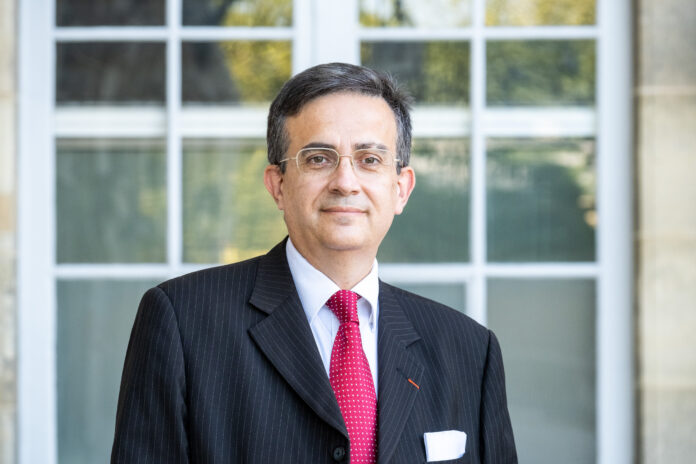By Kamal Shah
At a time when India and France are intensifying their ties across the board and scaling a new high in cooperation, the air show assumes a special dimension as an occasion to network and talk business. Both countries have specific strategic goals, and where they are aligned in matters of military ordnance, there is a common purpose. The two nations have been in tandem since 1998. French Ambassador to India, H.E. Thierry Mathou, scrutinises the strands that come together to create a strong security statement and a promise of working together in the aerospace sector.
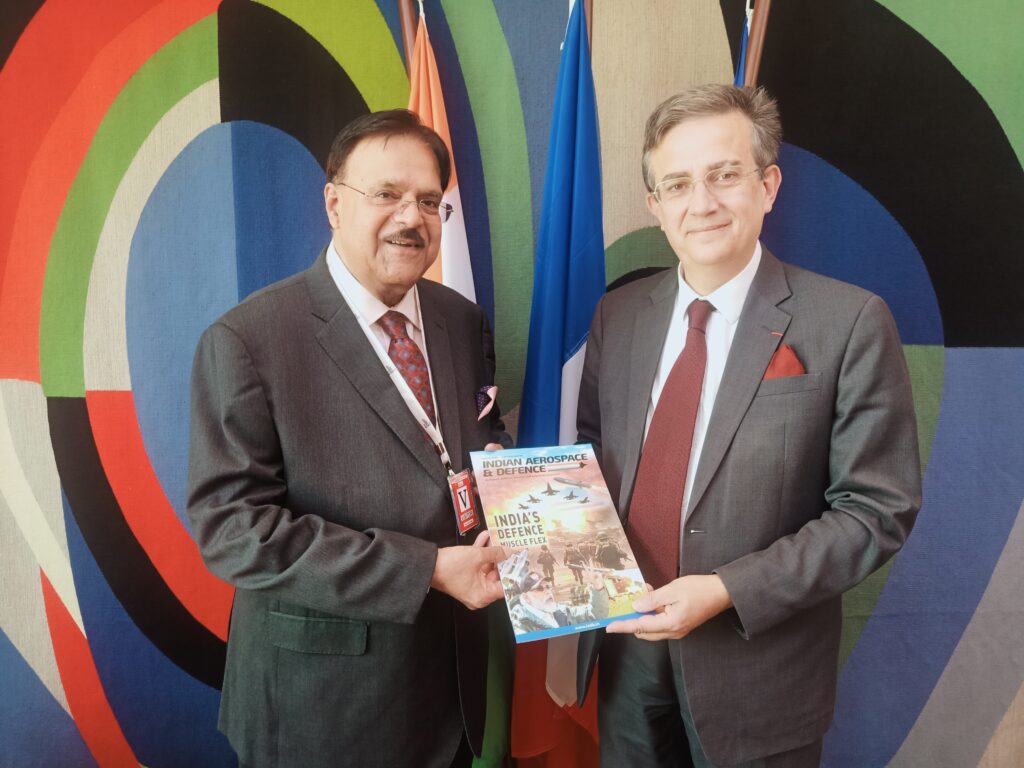
Q. Given that both countries prioritize “strategic autonomy,” what policy measures or frameworks can be implemented to advance co-development and co-production partnerships in the aerospace sector, moving beyond traditional buyer-seller relationships to achieve deeper technological collaboration and mutual benefit?
A. As you rightly pointed out, strategic autonomy is at the core of the national security doctrine of both France and India. For decades, France has been pursuing a policy of strategic autonomy, which explains why we have our efficient defence ecosystem.
Strategic autonomy does not mean that you isolate yourself from partners. It means that you build your own capacities, your own analyses, and your own decision-making process to be a reliable partner. This explains why France has been India’s strategic partner since 1998.
When it comes to defence and aerospace, Make In India has been a reality for the French industry for many decades. France is privileged to be closely associated with the development of the aviation and space industry in India, as 55% of French exports to India are in the aerospace sector. Besides, French defence companies are strengthening their industrial footprint by investing, producing and employing locally. A compelling illustration of this Indo-French aerospace collaboration is provided by the signing of the airframer contract last August between Hindustan Aeronautics Limited and SAFHAL Helicopter Engines Pvt. Ltd., for the joint design, development and production of a new engine for the future Indian Multi-Role Helicopter and the Deck-Based Multi-Role Helicopter.
Q. Considering India’s rapidly expanding ecosystem of unmanned systems, do you perceive significant opportunities for French companies to partner with Indian MSMEs or startups specifically in the development of AI-enabled autonomous systems or dual-use drone technologies, and what mechanisms do you envision could facilitate such collaborations?
A. To start with an overview, I have to say India has one of the fastest-growing ecosystems when it comes to the digital sector, especially in artificial intelligence. France and India already benefit from strong assets when it comes to research capabilities and data. Our two leaders have also seen the potential for future cooperation when Prime Minister Narendra Modi and President Emmanuel Macron endorsed in February 2025 the India-France Roadmap on Artificial Intelligence. French and Indian innovation ecosystems are also closely linked. French companies-major groups and start-ups- have a strong presence in India. Similarly, IT is a key sector for investment for Indian companies in France. We recently hosted the last edition of the VivaTech Summit in Paris and I am delighted by the participation of various Indian companies interested in exploring future cooperation with French industries.
A lot can still be done, especially when it comes to aerospace. 2026 will be the India-France Year of Innovation, as announced by President Emmanuel Macron and Prime Minister Narendra Modi in January 2024. One of the four key topics of this Year of Innovation will be dedicated to fostering innovation in the aerospace sector, by showcasing existing cooperation and bringing closer our respective innovation ecosystems closer together.
Q. What is the current status of co-production initiatives for fighter aircraft, and could you provide an overview of the strategic plans to strengthen defence capabilities?
A. I welcome the recent acquisition of 26 Rafale-Marine fighter jets by the Indian Navy. As I had the chance to previously underline, this contract is a new milestone in the strategic partnership and highlights the ability of the French industry to align with India’s evolving needs. In line with India’s Aatmanirbhar Bharat, the agreement paves the way for co-production and includes the transfer of technology, which reflects the high level of trust between our two countries.
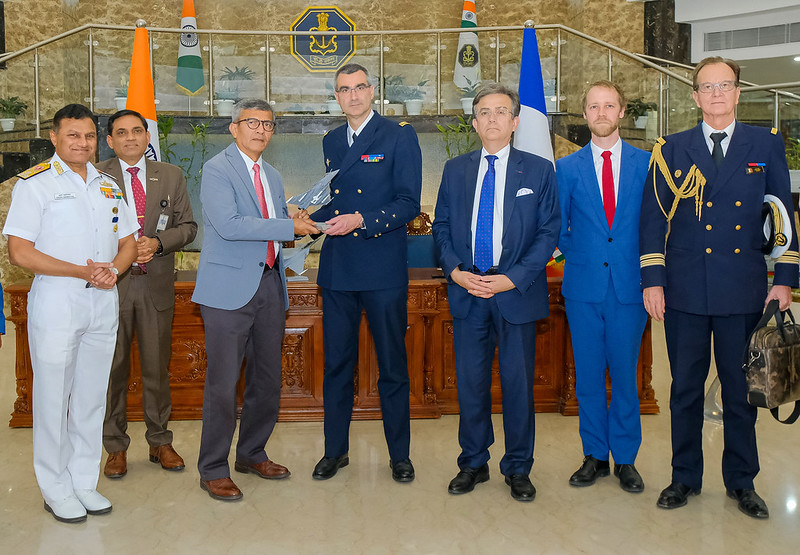
The French defence industry is ready to support India in enhancing its defence capabilities. This support would align with the framework, timeline and modalities preferred by the Indian side, and would be tailored to the potential industrial partner chosen for future projects. Our ambition is and has always been to support India’s needs while respecting both Indian as well as French strategic autonomy.
Q. Given India’s expanding community of aerospace engineers and technologists, is there an established roadmap to foster Indo-French collaboration in research and development, particularly through the creation of joint centres of excellence focusing on advanced areas such as innovative materials, hypersonic technologies, or environmentally sustainable propulsion systems?
A. It is truly impressive to experience first-hand the dynamism of the transformation of the Indian aerospace industry. These efforts are accompanied by significant training for all aerospace professions to expand the much-needed pool of talent in the field.
France is committed to playing a vital role in helping French companies establish a number of vocational training schemes. In 2019, Dassault Aviation, a member of Aérocampus Aquitaine to which it has entrusted the project management, created a Professional Baccalaureate-level training course to meet the needs of its establishment in Nagpur. Thales Group has not only been developing its engineering centres in Noida and Bengaluru, but also built partnerships with the Central Manufacturing Technology Institute (CMTI) in 2022 and the Indian Institute of Information Technology (IIIT) Delhi in 2021. ENAC (École Nationale d’Aviation Civile) signed an agreement with IIT Madras to offer a course in aviation safety management from early 2025, with the support of Airbus.
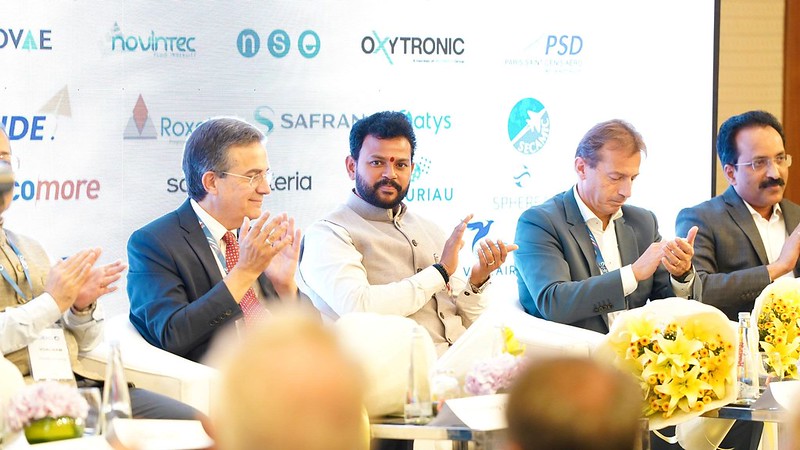
We can be proud of what has already been achieved. Looking ahead, I have no doubt that the India-France Year of Innovation will provide a unique opportunity to deepen talent cooperation and exchanges.
Q. How do you envision the evolution of the Defence Industrial and Space Roadmap over the coming decade, particularly in the context of the growing partnership between the two nations on space situational awareness and satellite launches? Could you provide further details on the progress and future direction of these collaborative initiatives?
A. Space is the new frontier of the Indo-French strategic partnership. Our cooperation covers very concrete projects, including a joint interplanetary mission- the Trishna satellite mission, which will be launched in 2026. This spacecraft will be the latest addition to the joint satellite fleet dedicated to climate surveillance.
Space cooperation has expanded from the traditional partnership between CNES and ISRO to a cooperation between our space commands. India and France signed a Letter of Intent in the field of Defence Space Partnership in January 2024, paving the way for future cooperation.
The next Bengaluru Space Expo will take place during the India-France Year of Innovation. I firmly believe it can lead to new business opportunities and strengthen ties between our space ecosystems.
Q. To what extent could the Paris Air Show serve as a strategic platform for initiating new bilateral defence programs or innovation challenges, particularly those that seek to actively involve private Indian industry or startups supported by the Innovations for Defence Excellence (iDEX) initiative?
A. Figures speak for themselves: as the largest aerospace industry event worldwide, Paris Air Show brings together 2,500 exhibitors from 48 countries, bringing 300,000 visitors to see 150 aircraft and attend 210 flying displays. It is an occasion to showcase existing innovation and excellence, as well as an opportunity to deepen business ties. The previous edition resulted in the announcement of many contracts, totalling 150 billion dollars.
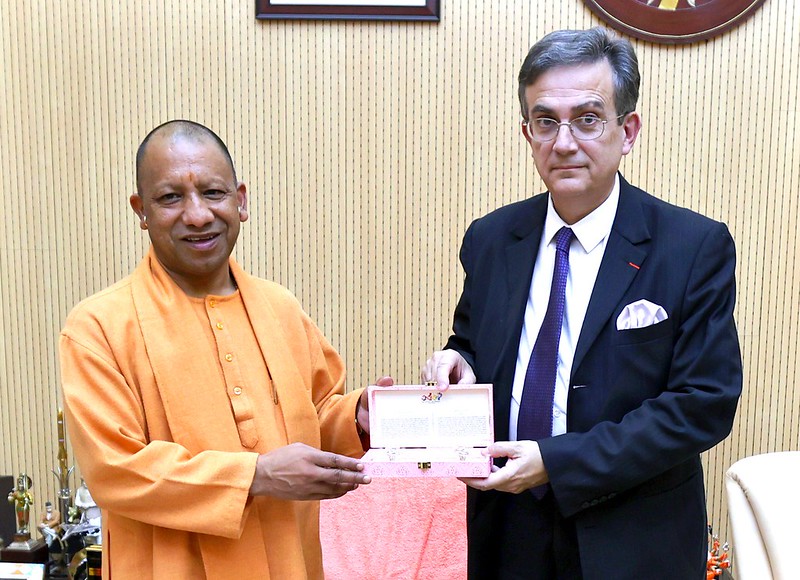
This year’s edition is intended to be even richer and more innovative, focused on finding concrete solutions, especially to meet the immense challenge of decarbonizing the aviation sector. Indian officials as well as private stakeholders have been invited. I am certain that the Paris Air Show will be an occasion for fruitful exchanges that will help consolidate our exceptional strategic partnership.

